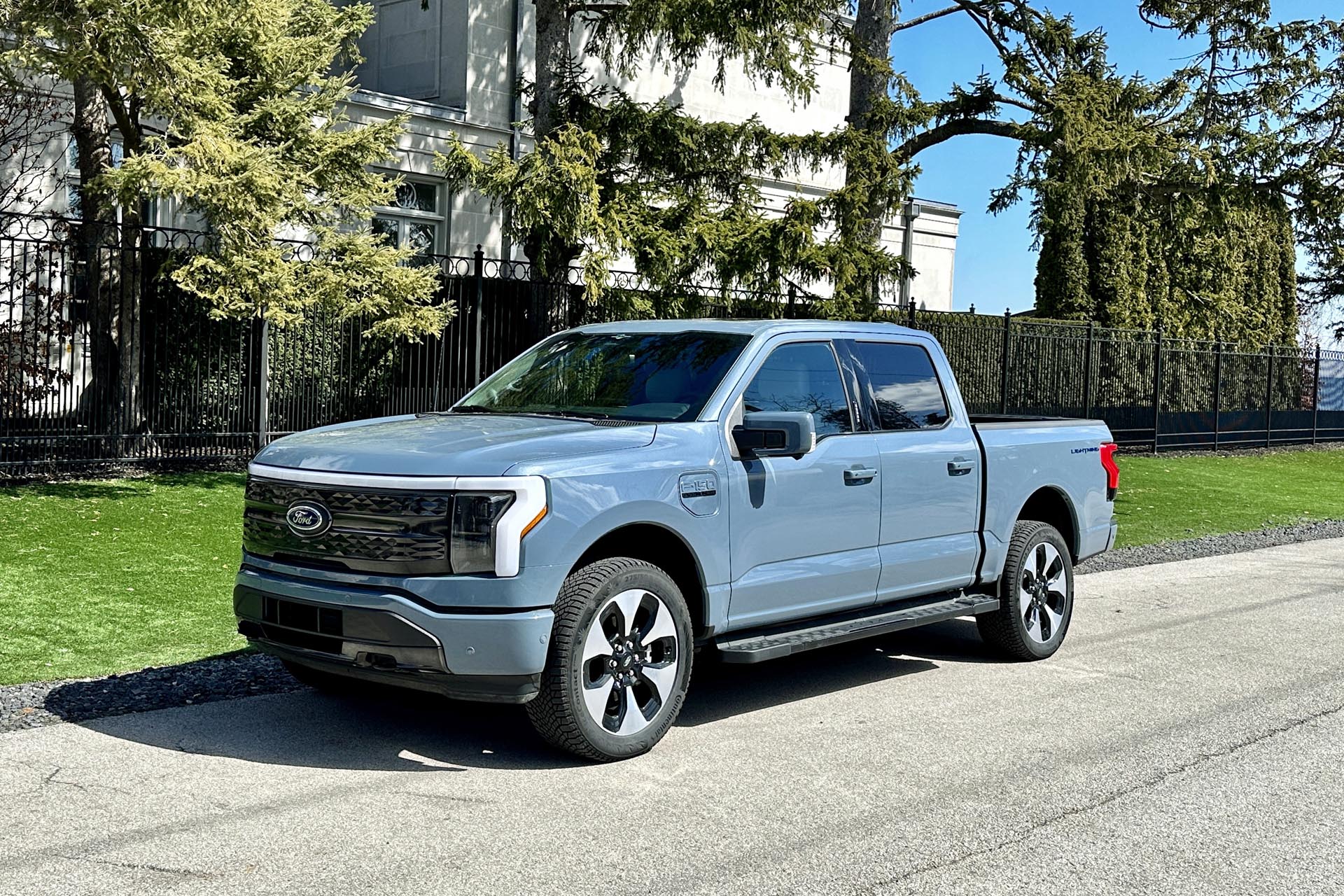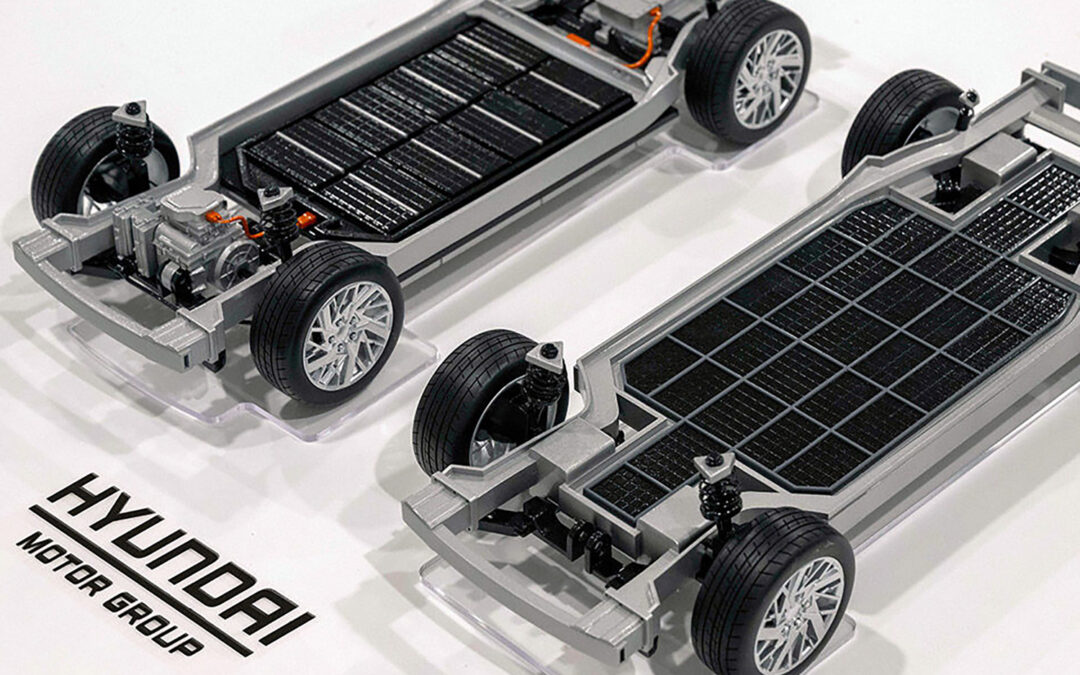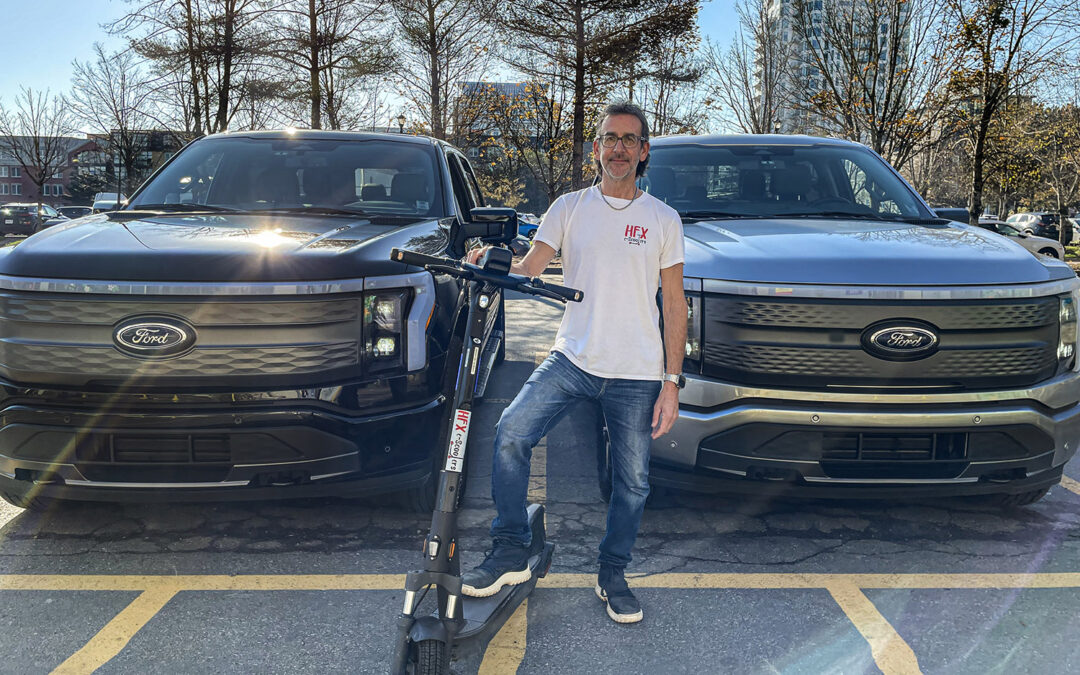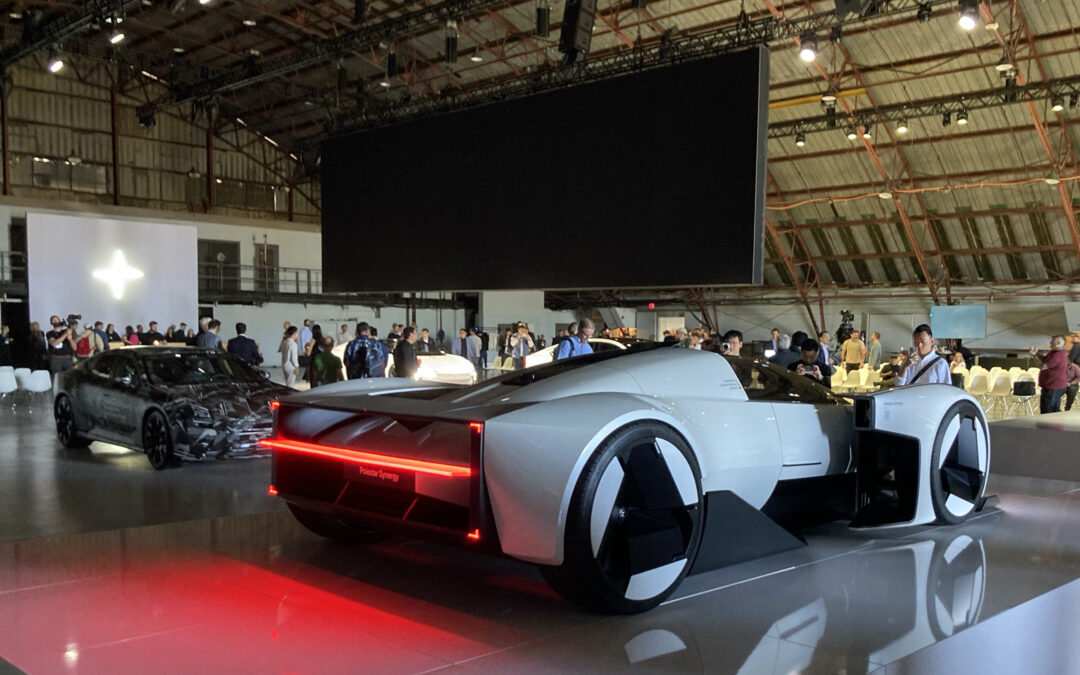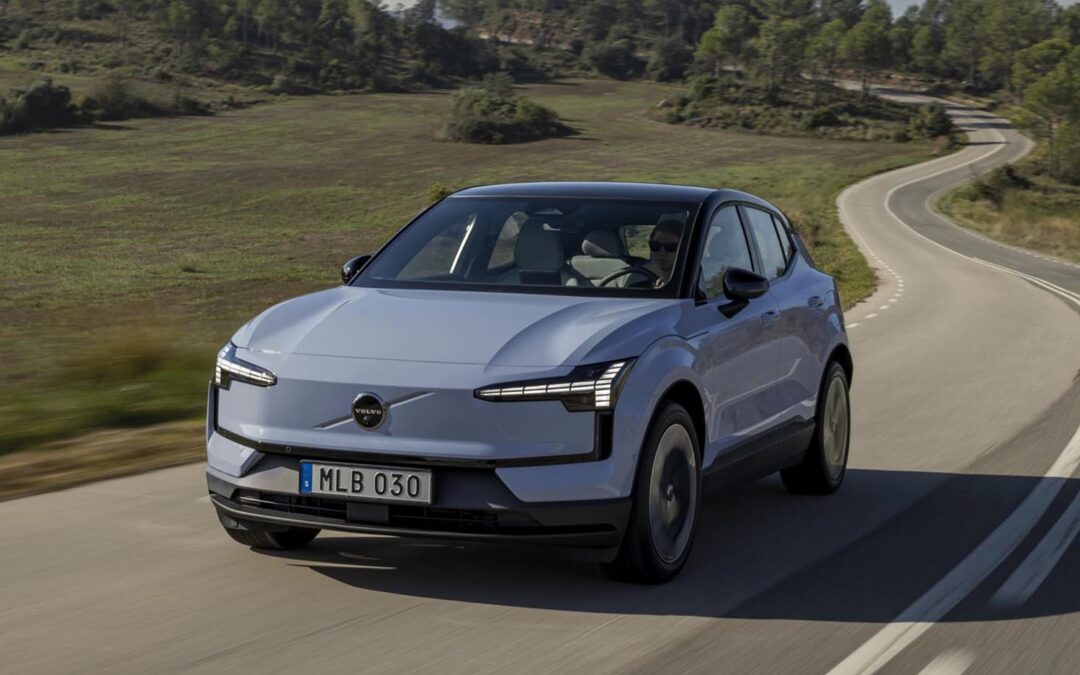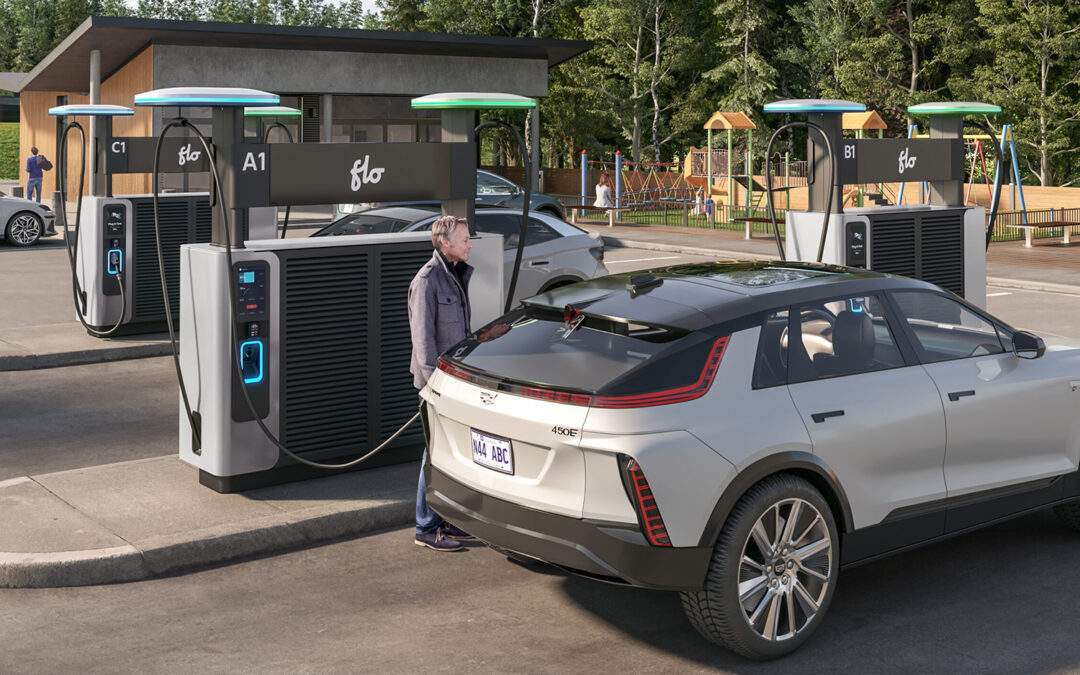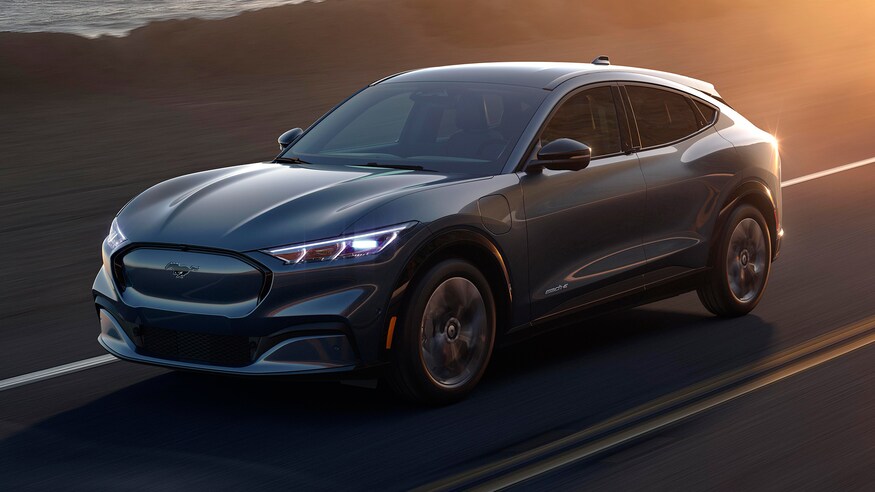Convincing private motorists to go electric has not been the challenge expected, as these people are embracing the electrified scene in growing numbers. The issue has to do with the commercial side, especially the light- and medium-duty parts of the business. Two of the early adopters are Ford with the F-150 Lightning and Mercedes-Benz with its new eSprinter van.
Ford’s take on the electrified pickup produced something that looks like a regular F-150, which in a good thing. With its body-on-frame chassis and standard all-wheel-drive, it does everything expected of a good pickup truck. Go with the range-topping Lightning Platinum and it arrives full-zoot, so you get the extended-range battery and more power right out of the box.
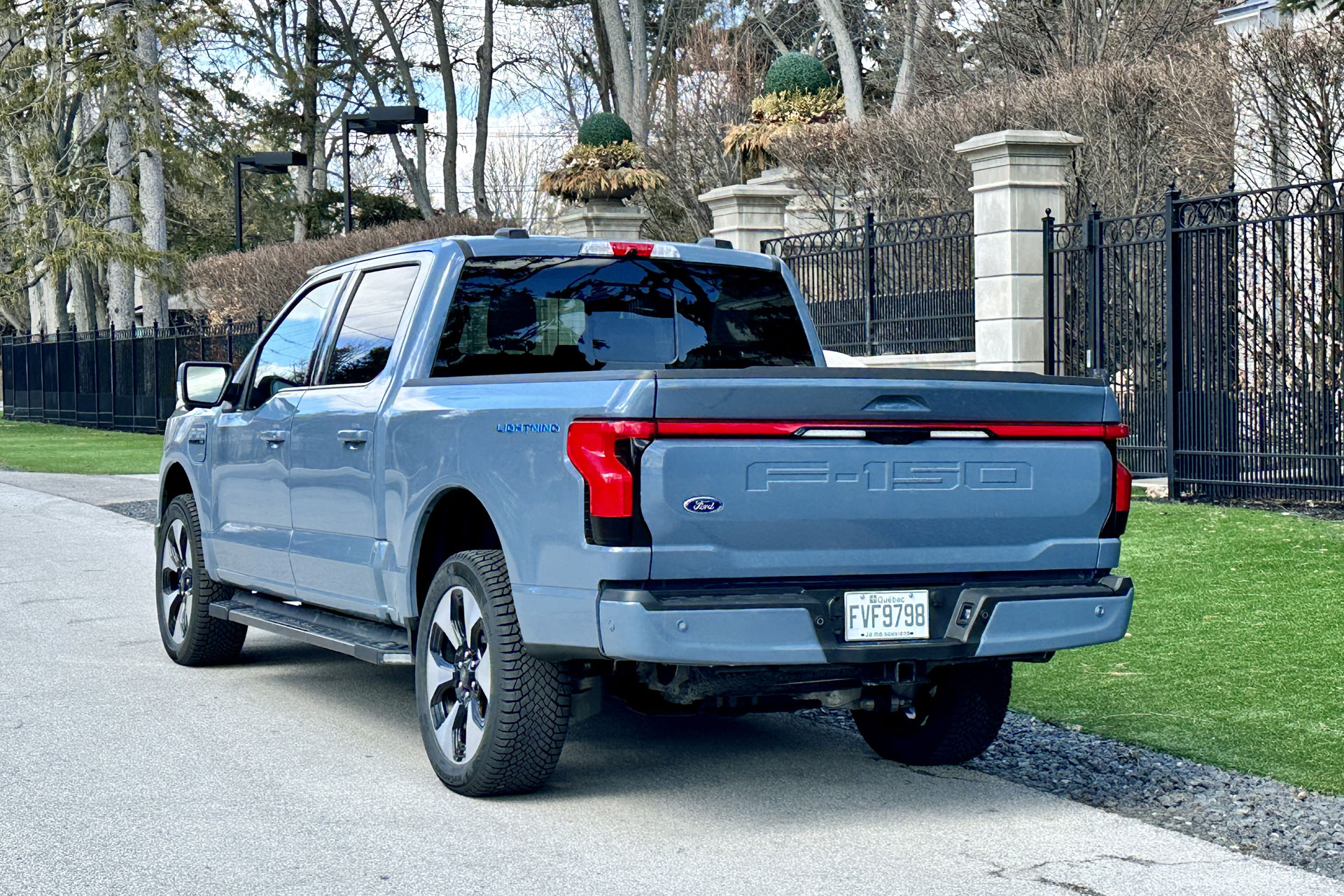
2023 Ford F-150 Platinum / Graeme Fletcher, The Charge
In this case, it increases the battery size from 98 kilowatt-hours to 131 kWh. This ups the driving range from a so-so 386 kilometres to a more realistic 483 km. It also bumps the horsepower from 426 hp to a meaty 563 hp. Both versions twist out a stump-pulling 775 lb-ft of instant-on torque. The elevated numbers give the Platinum a serious turn of speed, especially when Sport mode is engaged — it romps to 100 km/h in five seconds and does the more important 80-120 km/h passing move in 3.3 seconds. Both are sports car-worthy times!
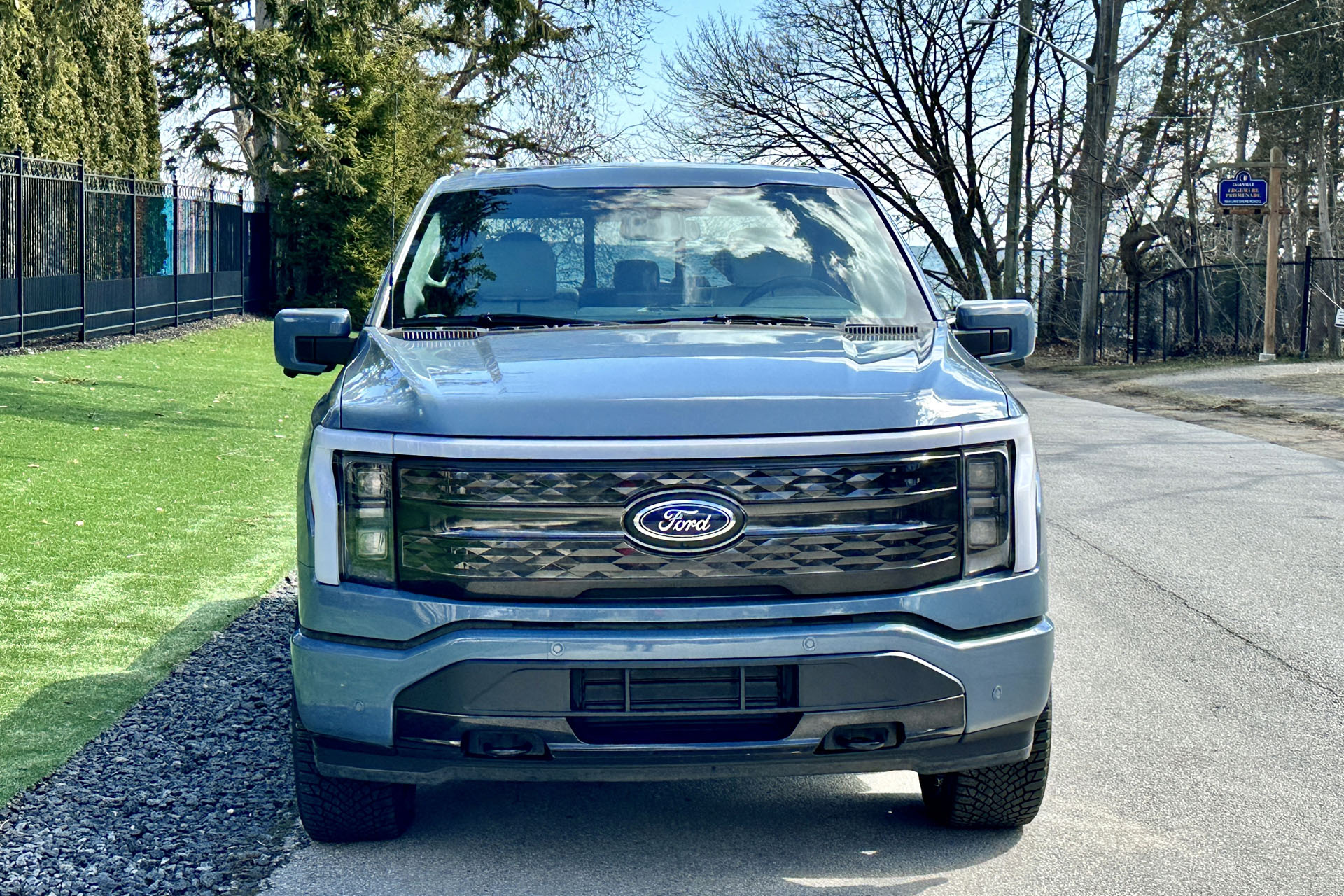
2023 Ford F-150 Platinum / Graeme Fletcher, The Charge
The F-150 Lightning Platinum also has the ability to tow 3,855 kilograms and it has a trailer brake controller and Pro Trailer Backup Assist as standard equipment. The latter makes a towing neophyte look like a seasoned pro when backing a trailer up! The problem is towing a heavier trailer drains the battery quickly, so plan your charge stops ahead of time! The positive numbers continue with a maximum payload of 907 kg, with a generous 181 kg of that fitting under the hood in the 400-litre secure frunk.
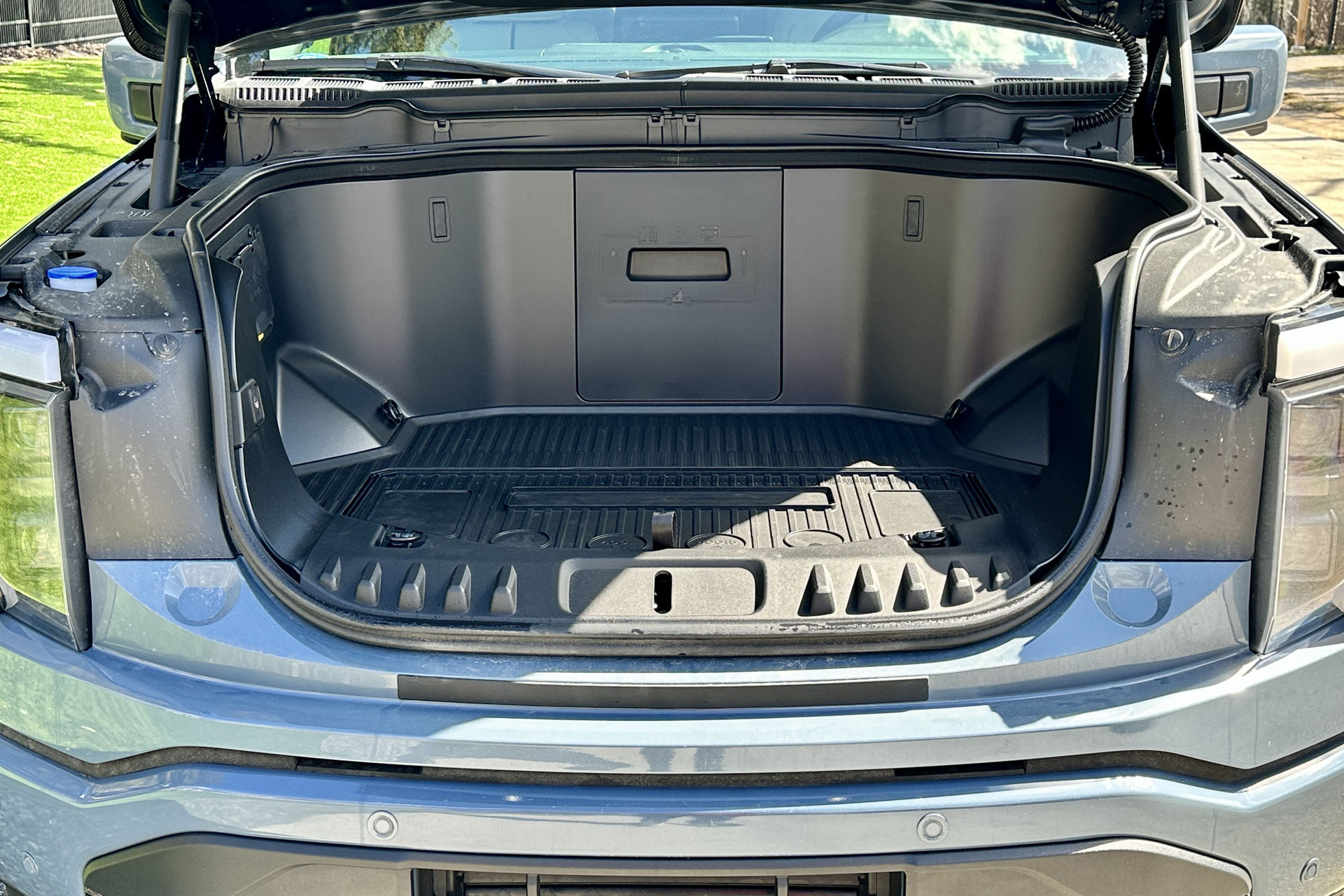
2023 Ford F-150 Platinum / Graeme Fletcher, The Charge
As good as these numbers are, the reality is much of the Platinum’s brawn is likely to go unappreciated or unused. This is a truck designed for people who like to drive trucks more than those who use it as a true workhorse. As the numbers say, it has absolutely nothing to do with outright ability. It has to do with the driving range and the availability of a fast charging network when out of town — a rural building site with nothing but 110 volts does not cut it when a charge is needed to get home.
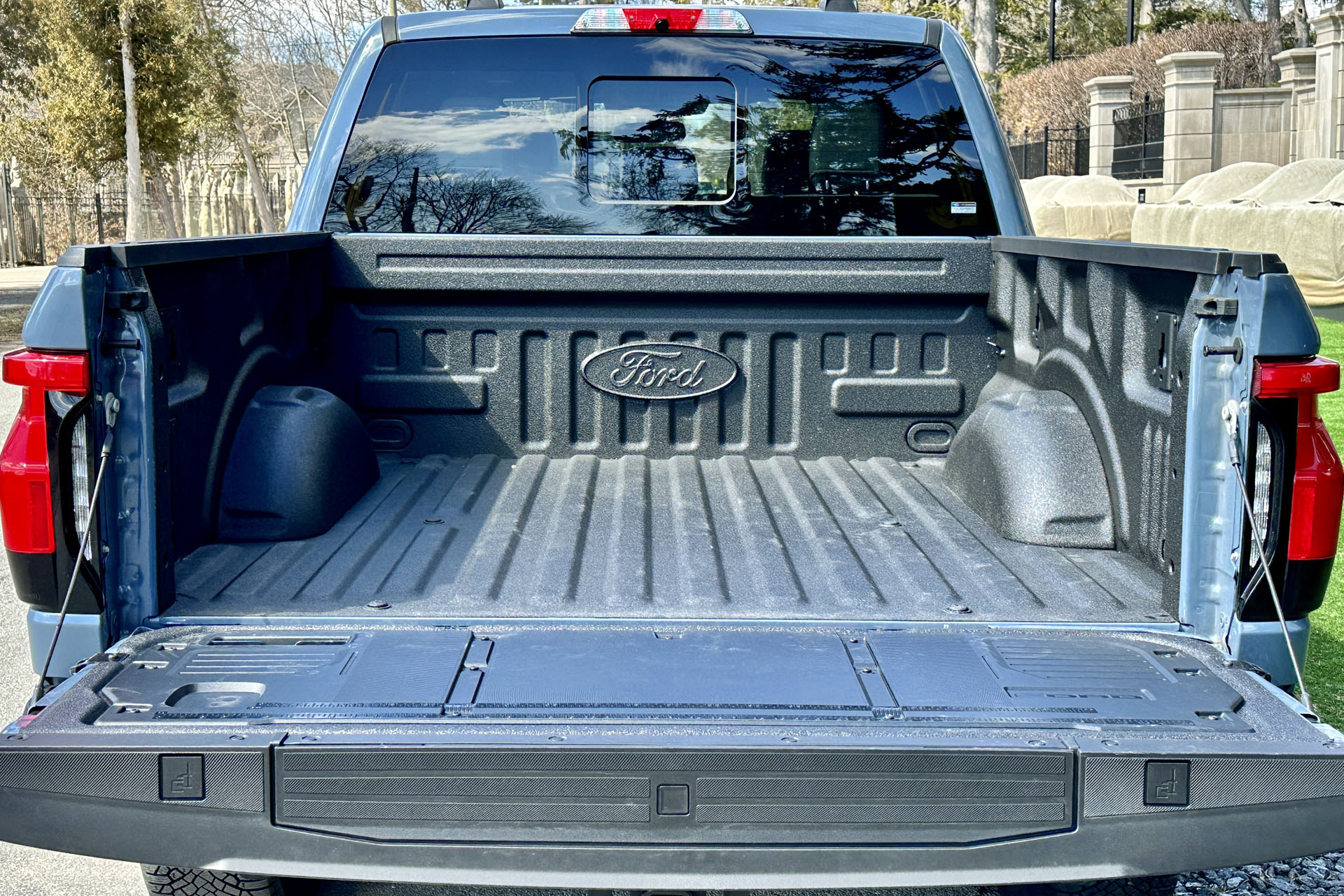
2023 Ford F-150 Platinum / Graeme Fletcher, The Charge
The problem is 110-volt charging is abysmally slow. In many cases, this scenario means the driver is out of luck. The Lightning, thankfully, does an admirable job when push comes to shove. A regular 110-volt outlet took the battery from 15 per cent to 22 per cent overnight, so the next morning there was the range needed to get to a DC fast charger and access to some real driving range.
The other aspect that surfaced during the test was charging the Lightning when towing a trailer is an interesting challenge. Invariably, it means unhooking the trailer and parking it before going to the charger and plugging in the F-150. In the urban charging locations I visited, there was not enough space to accommodate the truck and trailer as a unit without blocking traffic or, as witnessed, the combo being parallel parked (curbside) blocking all available chargers because the charging station was designed to accommodate vehicles parked perpendicular to the curb. A frustrated driver waiting for a splash-and-go to get home explained to me these people are part of an emerging breed he called “charge hogs.”
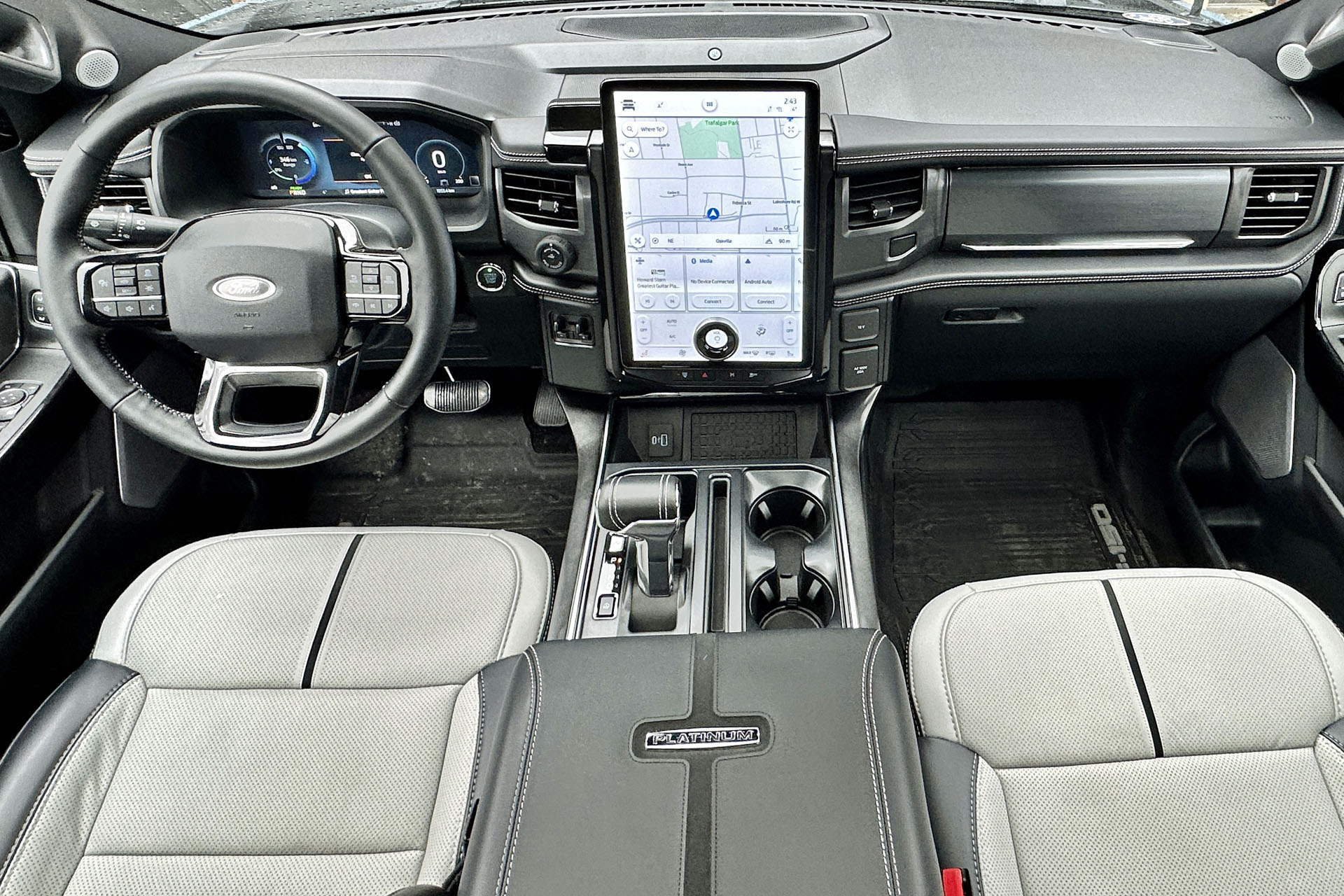
2023 Ford F-150 Platinum / Graeme Fletcher, The Charge
Anyway, back to the road. Where the Lightning succeeds is the way it rides. Normally, an unladen truck tends to be a bit bouncy until there is some weight in it. In the Lightning’s case, the live axle with leaf springs has been ditch in favour of an independent rear suspension. Never underestimate what an independent rear suspension can do for a truck!
Where the regular F-150 sees the rear-end washboard out of line when it hits a rippled section of road mid-corner, the Lightning rides it out totally unphased. This means moderate haste through a corner is tolerated surprisingly well, although push it hard and things do get a little more interesting.
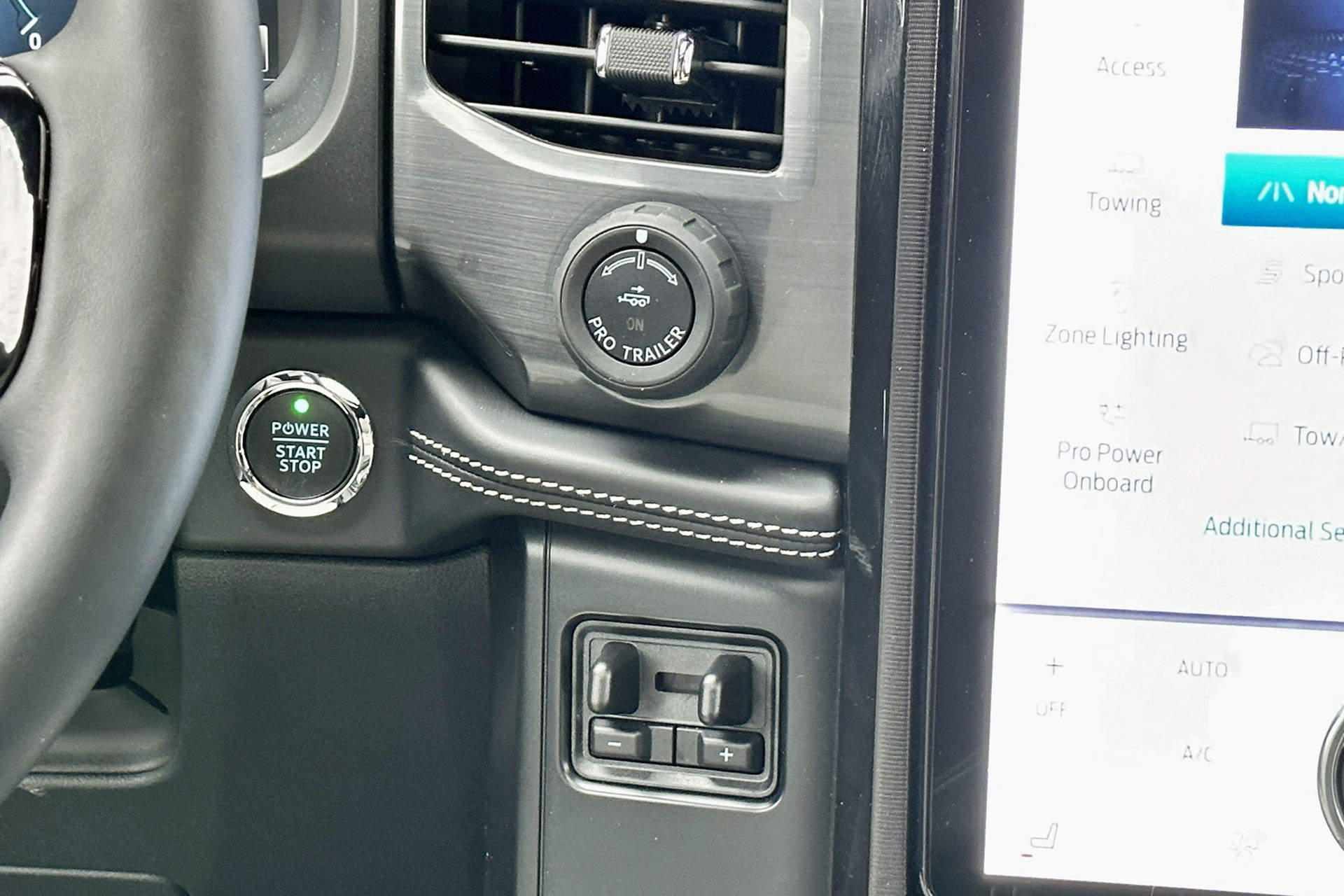
2023 Ford F-150 Platinum / Graeme Fletcher, The Charge
Likewise, the steering feel and feedback is good for a truck. All of this gave the Lightning more composure than expected when it was hustled through a corner, and remember this is a pickup with a 3,130-kg curb weight! Of course, all the good things the rear suspension does for handling it also does for ride comfort. This helps to explain why the radical F-150 Raptor inherits the same design.
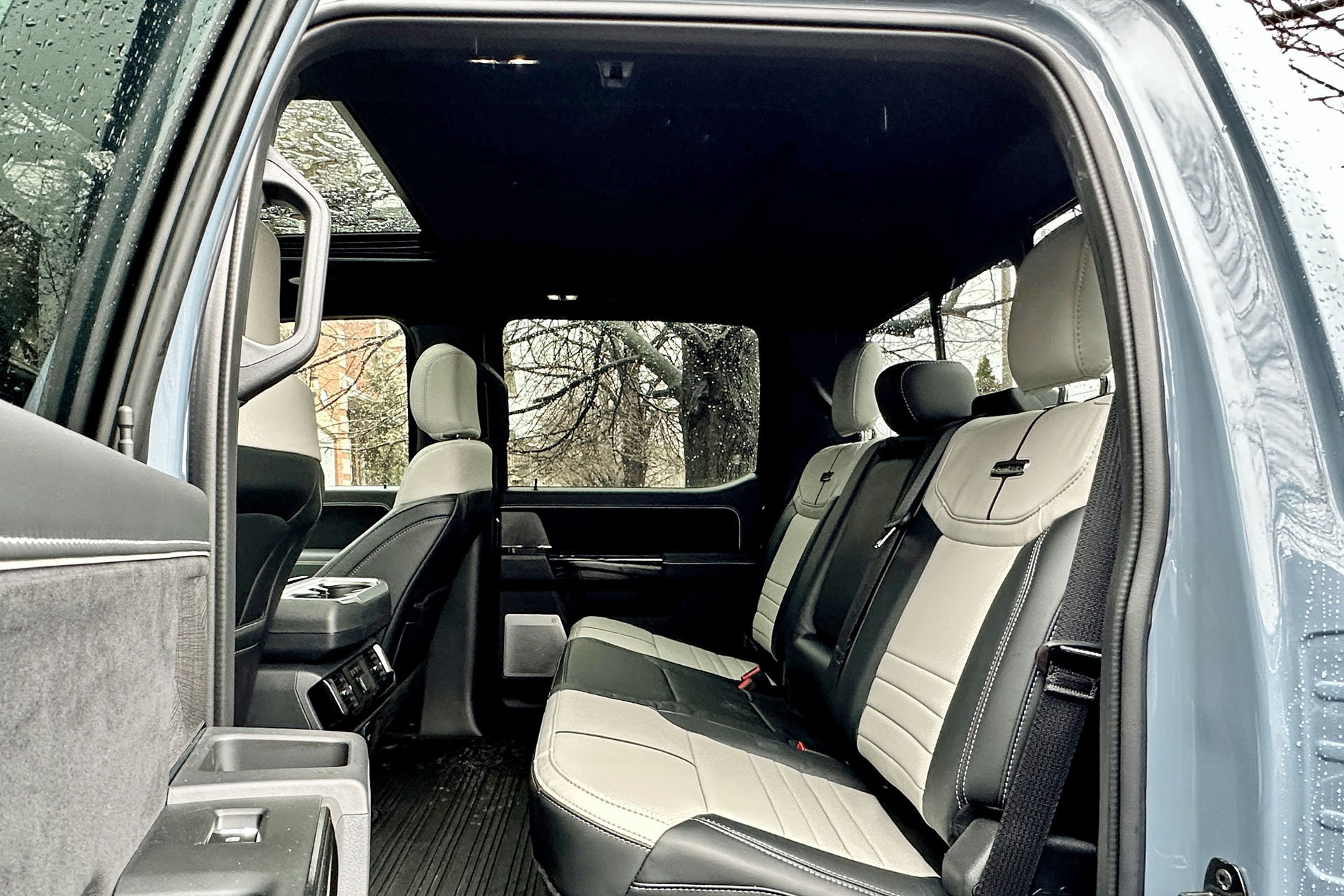
2023 Ford F-150 Platinum / Graeme Fletcher, The Charge
As with the regular F-150, the cabin is roomy and accommodating. With power adjustable pedals, steering wheel and fully-articulated seats just about any driver of any stature can plug in the right driving position and store it into memory. Beyond this ability, the Platinum arrives fully-duded – only the paint colour and sprayed-in bedliner were optional on the test truck, which brought the price from $121,000 up to $122,400. As such, it arrives with heated/cooled Nirvana leather front seats, heated rear seats, a soulful 18-speaker Bang & Olufsen sound system, an onboard scale to weigh the payload and all of the needed packages. The highlight, however, is the 15.5-inch multimedia touchscreen. It is a snap to use and gives fast and easy access to all functions through crisp, uncluttered graphics. It’s here the driver can call up the one-pedal drive option and select it.
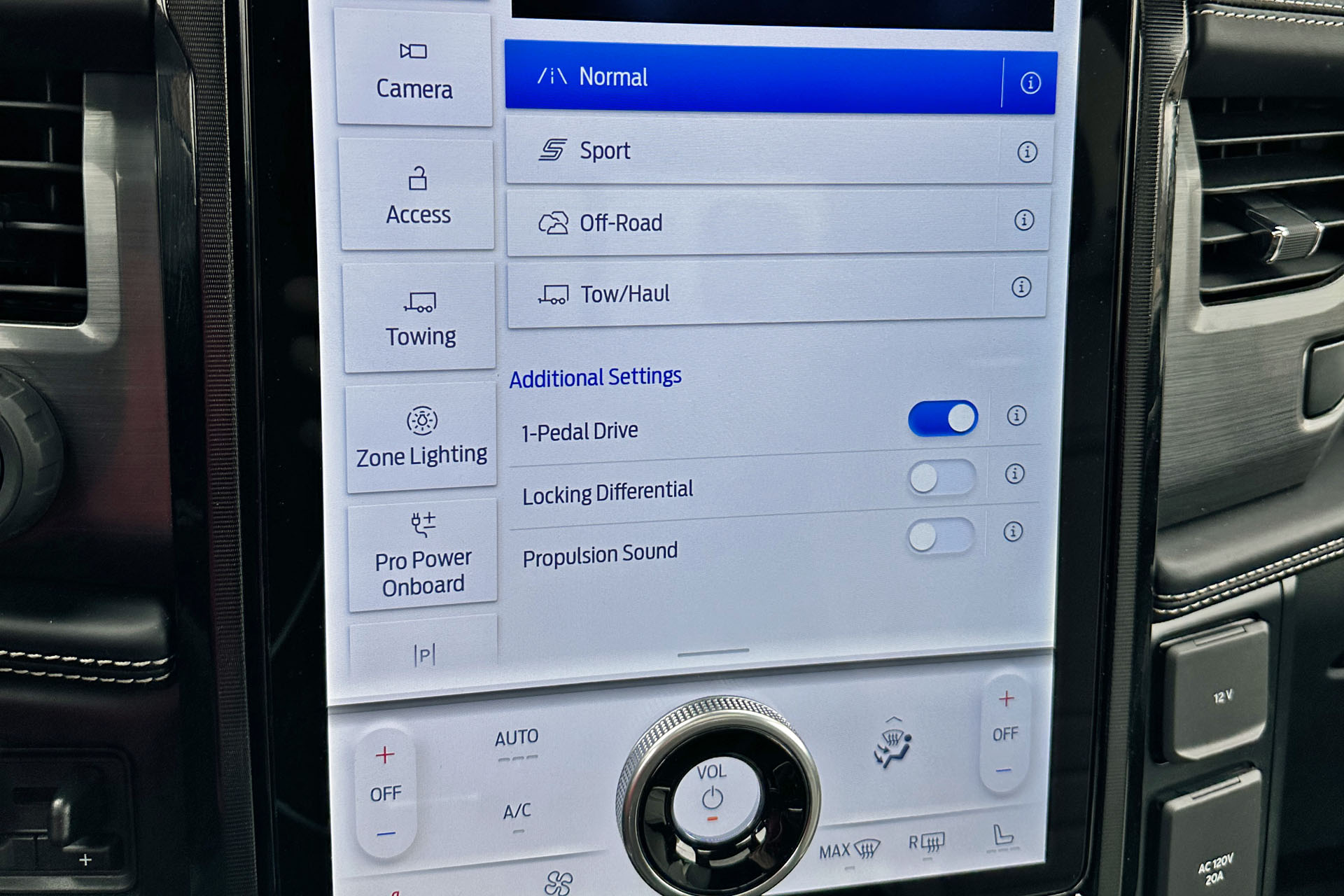
2023 Ford F-150 Platinum / Graeme Fletcher, The Charge
As for functionality, there is a ton of space in the Crew Cab and, while the box is capped at 5-foot-5, it is functional and plays home to Ford’s Pro Power Onboard. This system delivers up to 9.6 kW of power. There are multiple outlets with 2.4 kW of power in the frunk and 7.2 kW through the outlets in the bed. The combination allows the camper-on-the-go to power everything from toasters to power tools and TVs. In all, Ford says the extended-range Platinum has the potential to deliver 30 kWh of power per day for up to three days!
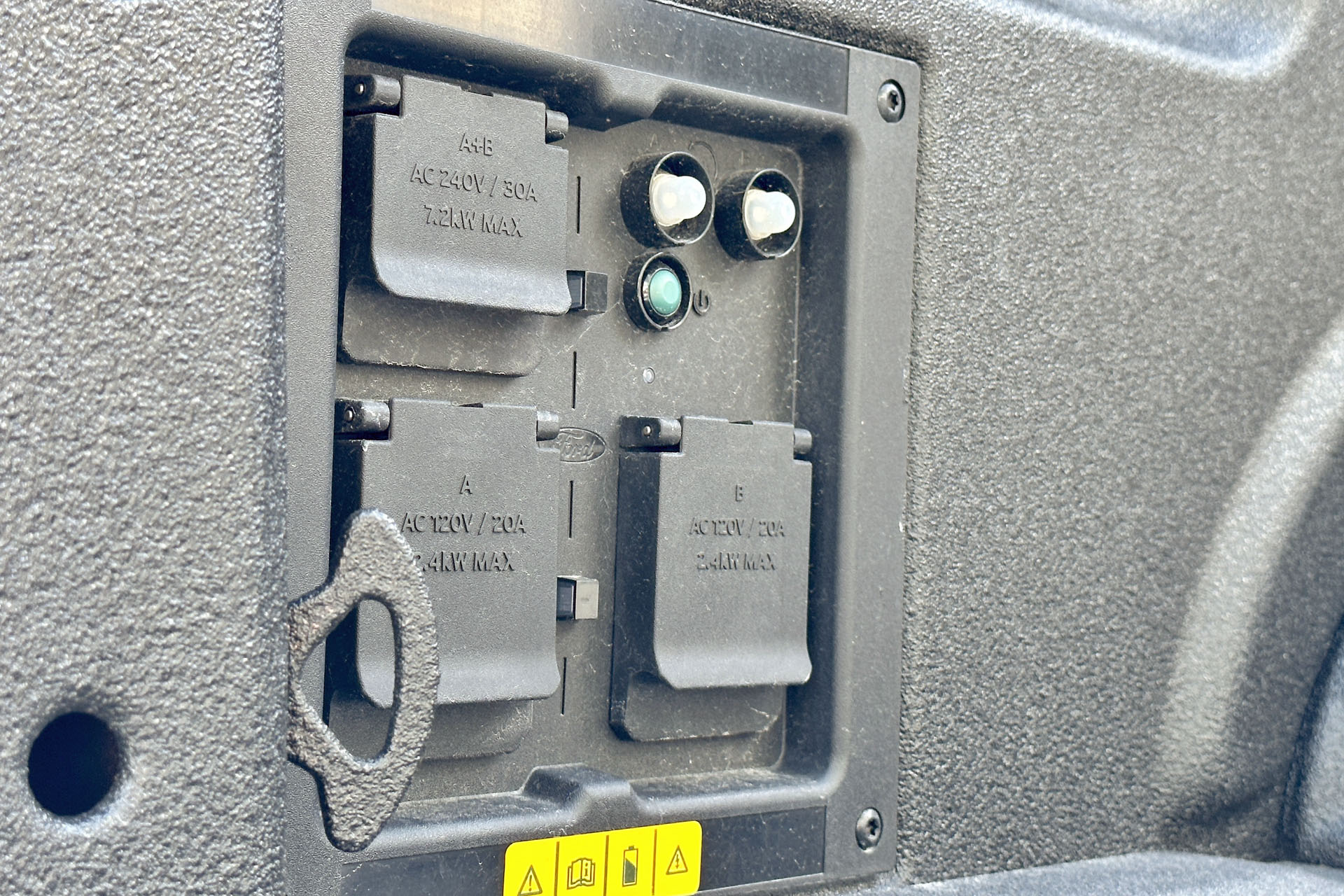
2023 Ford F-150 Platinum / Graeme Fletcher, The Charge
Make no mistake, the Ford F-150 Lightning is a fully-functional pickup truck. It can tow, haul and play in the dirt with the best of them. However, and perhaps due to these very credentials, it needs an established DC fast charging infrastructure like that found in a major urban centre to function at its best. Get out of town and the lack of speedy electrons becomes the Lightning’s limiting factor.
